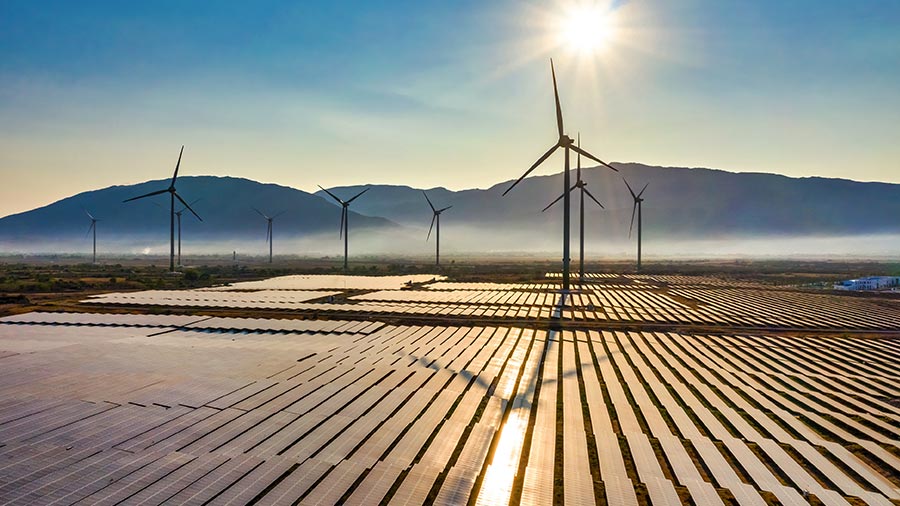ASEAN countries are making progress towards their commitment to renewable energy. In this strategy wind energy is becoming increasingly important.
According to a report by the Southeast Asia Energy Outlook 2022, energy demand in Southeast Asia has been increasing by an average of 3% annually over the past twenty years. This trend is expected to continue until 2030. Although the Covid-19 pandemic has slowed down the economic development of the region, the report projects that the region's GDP will grow by an average of 5% annually until 2030 before dropping to an average of 3% until 2050. Energy plays a critical role in this economic growth. Since the mid-1990s, the region has heavily relied on oil imports from the Middle East and Africa. If current policies remain unchanged, oil imports will increase. However, the recent price hikes and the Ukraine crisis could have a long-term impact on how natural gas is used in the region by affecting public perception of affordability and government attitudes towards investing in gas import infrastructure.
In this context, ASEAN countries are making progress towards their commitment to renewable energy. Indeed, in 2020/2021, they updated their NDC targets and have plans to achieve them by specific years. For example, Thailand aims to reduce GHG emissions by 20-25%, while Indonesia aims for a 29-41% reduction by 2030. Other countries have set their targets and implemented strategies to achieve them. During COP26, 8 of 10 ASEAN countries announced their will to reach net zero targets, the earliest by 2050 and the latest by 2065. To reach these targets, ASEAN governments are diversifying their renewable energy resources. Among these, wind energy is becoming increasingly important.
Before COVID-19, the demand for electricity in Vietnam was projected to rise at a rate of 10% per year. Based on forecasts, this demand is expected to surge by five times its current level by the year 2050. Therefore, diversifying renewable energy technologies and engaging with local partners and governments is essential. At the moment, in Vietnam, the government is prioritizing wind power over solar. With a coastline of over 3,000 km, offshore wind power provides excellent opportunities. Vietnam has a technical potential of up to 599 GW, larger than other Southeast Asian peers. The government has taken prompt action to stimulate wind energy growth by updating supporting mechanisms and introducing a public-private partnership model. Vietnam's commitment to decarbonization is promising, and wind power has immense potential to thrive.
However, for the moment Vietnam generation capacity is not able to satisfy its energy needs and the aim of net zero emissions by 2050. Indeed, Vietnam and Thailand have set goals to achieve net zero greenhouse gas emissions by 2050. Laos is looking to capitalize on this demand. The growing demand for renewable energy in neighboring countries has led Laos to turn to a wind power investment strategy. Laos exports approximately 80% of its electricity to neighboring Thailand and Vietnam, contributing 30% of its export value. Additionally, the country is building transmission infrastructure in order to supply power also to Cambodia.
Indeed, Laos, a prominent hydroelectric power exporter in Asia, is diversifying its energy portfolio by venturing into wind power to reduce its reliance on water resources. In this context, Laos is making a significant effort to reduce its dependence on hydropower for electricity generation. While hydropower currently accounts for 70% of the country's total electricity generation, concerns about its dependence have prompted Laos to shift towards wind power generation. This shift is due to a couple of reasons. Firstly, Laos' hydropower production usually decreases during the dry season. Secondly, China's control of the upstream rivers poses a risk of sudden changes in water levels, which poses a threat to agriculture and fisheries. Furthermore, a hydroelectric dam built by South Korean and Thai companies in the Attapeu province of southeastern Laos broke out in 2018, resulting in at least 71 deaths and over 6000 homeless. Nowadays, wind power generation has become a promising option for Laos. Wind farms are more efficient than solar panels as turbines can work almost day and night.
The country is currently constructing a wind farm in the scarcely populated mountainous region of southeastern Laos, which is slated to commence operations in 2025. The project involves several companies, including Mitsubishi Group (Japan) and BCPG Renewable Energy Company (Bangchak, Thai Energy Group). It will supply electricity to Vietnam for a period of 25 years. The Monsoon wind farm will occupy an extensive area of 70000 hectares and comprise 133 wind turbines, making it one of Southeast Asia's largest onshore wind farms, with a generation capacity of 600 megawatts. Laos' energy policy is export-oriented, and the country has already planned similar wind power projects.






